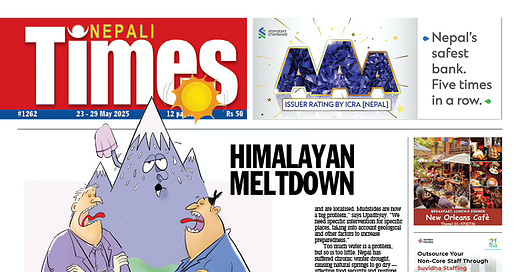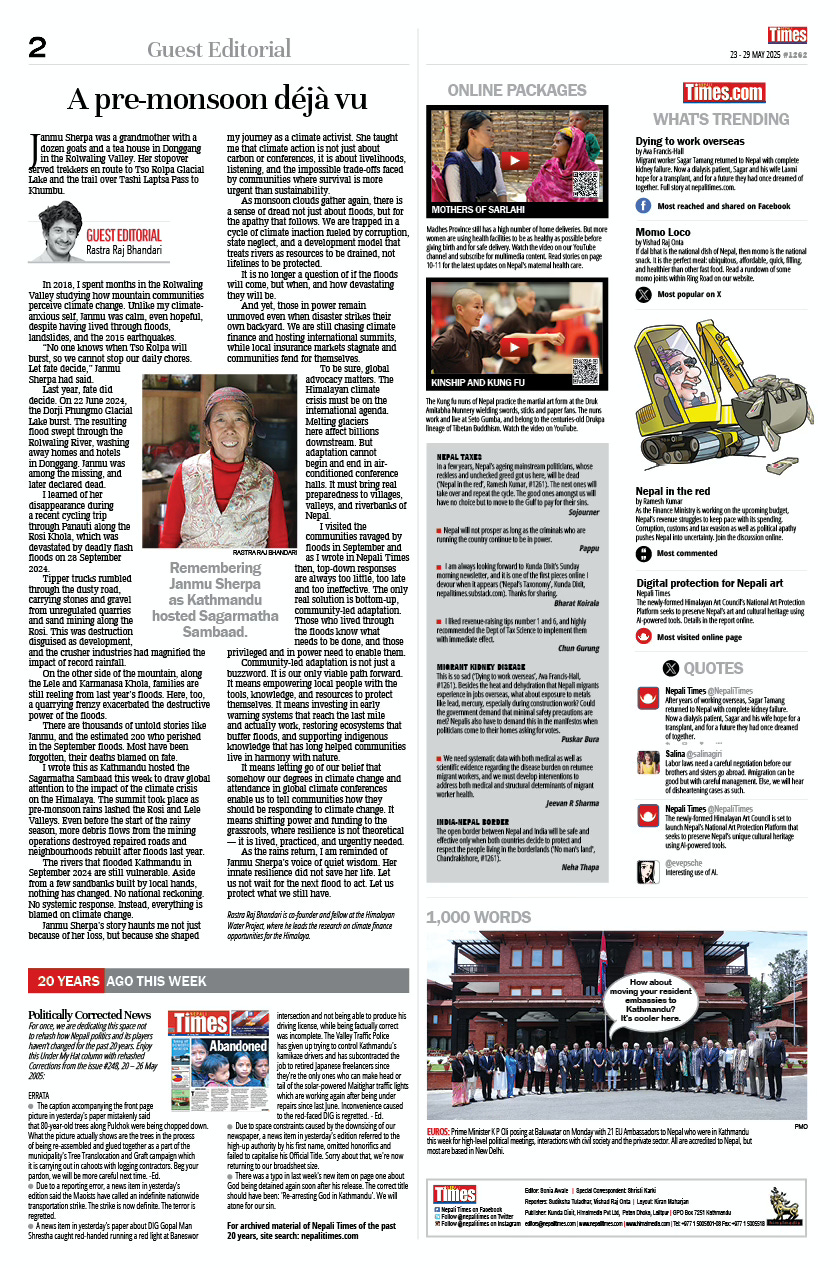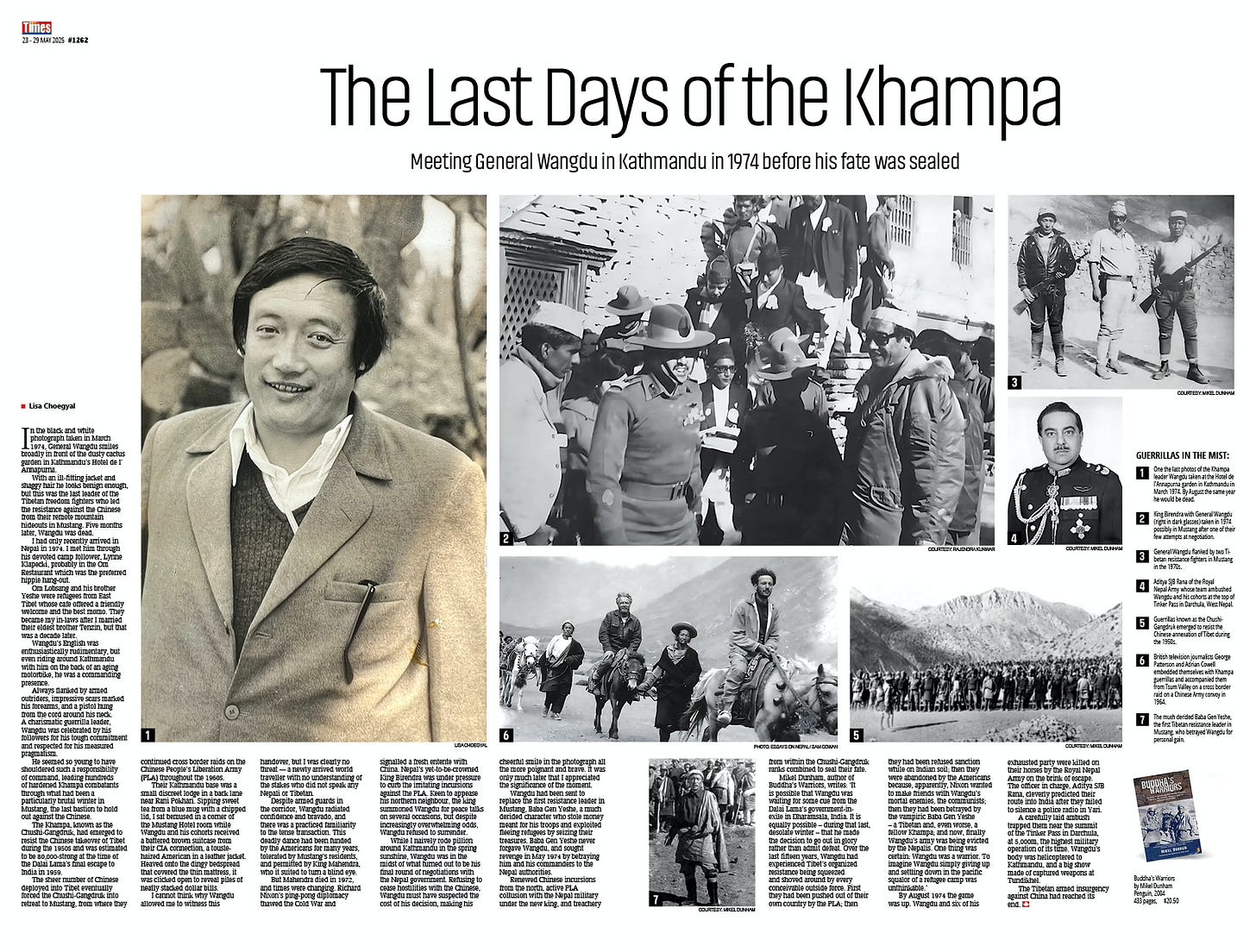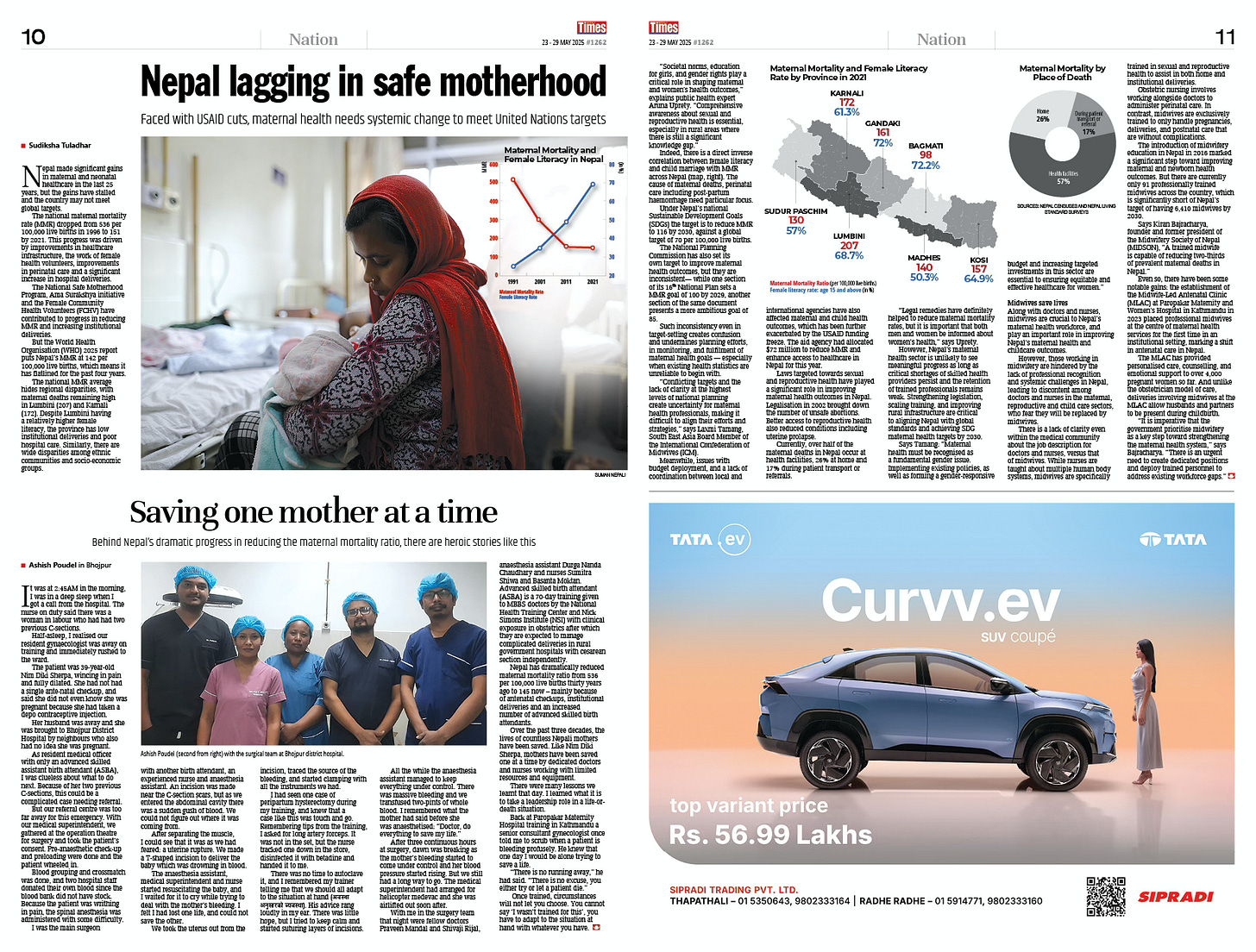Jai Nepal!
Let us start this week’s newsletter with the collective singing of the national anthem, as required by law. Could you all please stow your tray tables in an upright position, raise your window blinds, swing our knational knife in the air and sing lustily. All together now: “Resham Phiriri…Resham Phiriri…”
Oops wrong song. Thank you, please be seated. One thing the government can do immediately to instil underserved pride in our government is to require that ‘Sayon Thunga Fool Ka Hami” be aired before every Netflix film we stream. TV news anchors should be required to sing the national anthem before reading the evening news, however depressing it may be.
All national and international airlines flying into Kathmandu must mandatorily play the national anthem when the plane enters Nepal’s airspace. All passengers, including NRNs, will be required to stand up with their seatbelts on.
ATMs must henceforth play a folk-rock version of the national anthem before dispensing cash. All mountaineers must sing Nepal’s national song through their oxygen masks when they reach the summit of Mt Everest. Non-Nepalis can sing ‘Resham Phiriri’.
It is time to inculcate pride in Nepalis about Nepal and the accomplishments of the 14 coalition governments in the past 15 years. For example, the Gwarko Overpass (a National Pride Project) is finally nearing completion after 8 years. The Country is taking Great Leaps and Bounds Forward with the Tarai Fastrack which is on fast forward to link Kathmandu to India by the end of this century, give or take a few decades.
Many readers of Nepali Times may need some uplifting news, and something to make us proud to be Nepalis. I have some bad news: this week’s edition may not be of much help.
On page 1, Editor Sonia Awale does a post mortem of the Sagarmatha Sambad climate summit and how all the hot air contributed to global warming (Himalayan meltdown).
And in the Guest Editorial, climate finance expert Rastra Raj Bhandari recalls meeting Janmu Sherpa in Rolwaling in 2023, and her tragic death in a glacial lake outburst flood last June. Local people need urgent help to adapt to climate breakdown, and speeches by bigwigs in international summits in air-conditioned halls are not much help. (A pre-monsoon déjà vu, page 2)
In the 6-7 centrefold this week, Lisa Choegyal recalls meeting charismatic Khampa leader General Wangdu in Kathmandu in 1974, five months before he was killed in a Royal Nepal Army ambush in Darchula. The shifting tectonics of geopolitics at the time led to the US abandoning the Tibetan resistance movement (The Last Days of the Khampa).
On page 10-11, Sudiskha Tuladhar analyses why Nepal’s dramatic progress in reducing maternal mortality has flatlined, and what can be done to save mothers at childbirth (Nepal Lagging in Safe Motherhood). And from a remote hospital in Okhaldhunga, surgeon Ashish Paudel describes how his team managed to save a mother’s life despite being under-equipped and understaffed (Saving One Mother At a Time, page 11).
And finally, some uplifting news of a Nepali fashion icon in the United States. From New York, I profile Prabal Gurung who last week launched his new book, Walk Like a Girl: A Memoir. It is a searing, raw account of enduring and overcoming bullying and abuse back home in Nepal, and facing bullying in the US as he accumulated fame in New York’s fashion scene. Everything Gurung fought for — tolerance, inclusion and diversity — are in retreat in his adopted country because of a president who has espoused a culture of bullying (Being Prabal Gurung By Design, page 4-5).
See you all from Nepal next week.
Kunda Dixit







